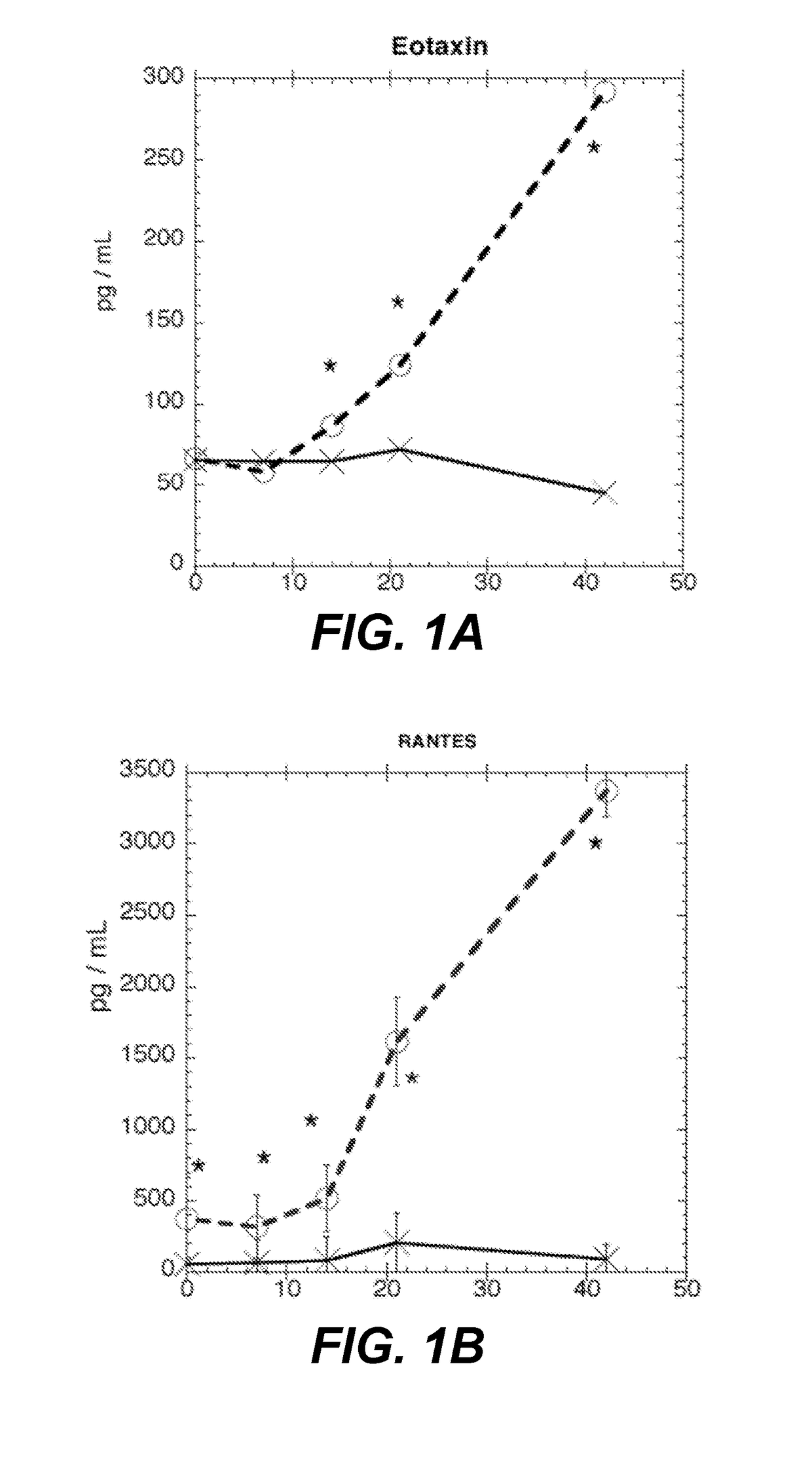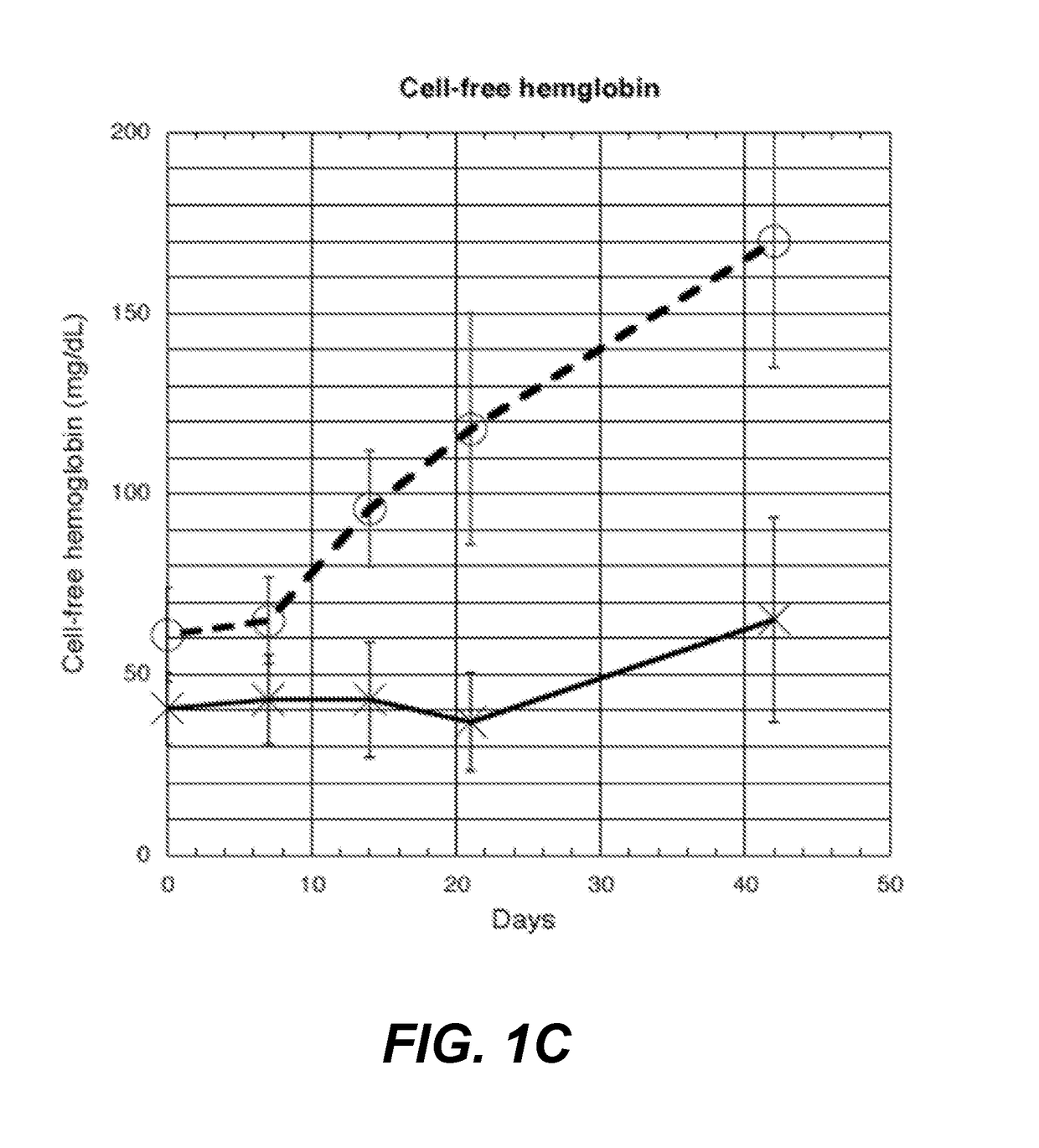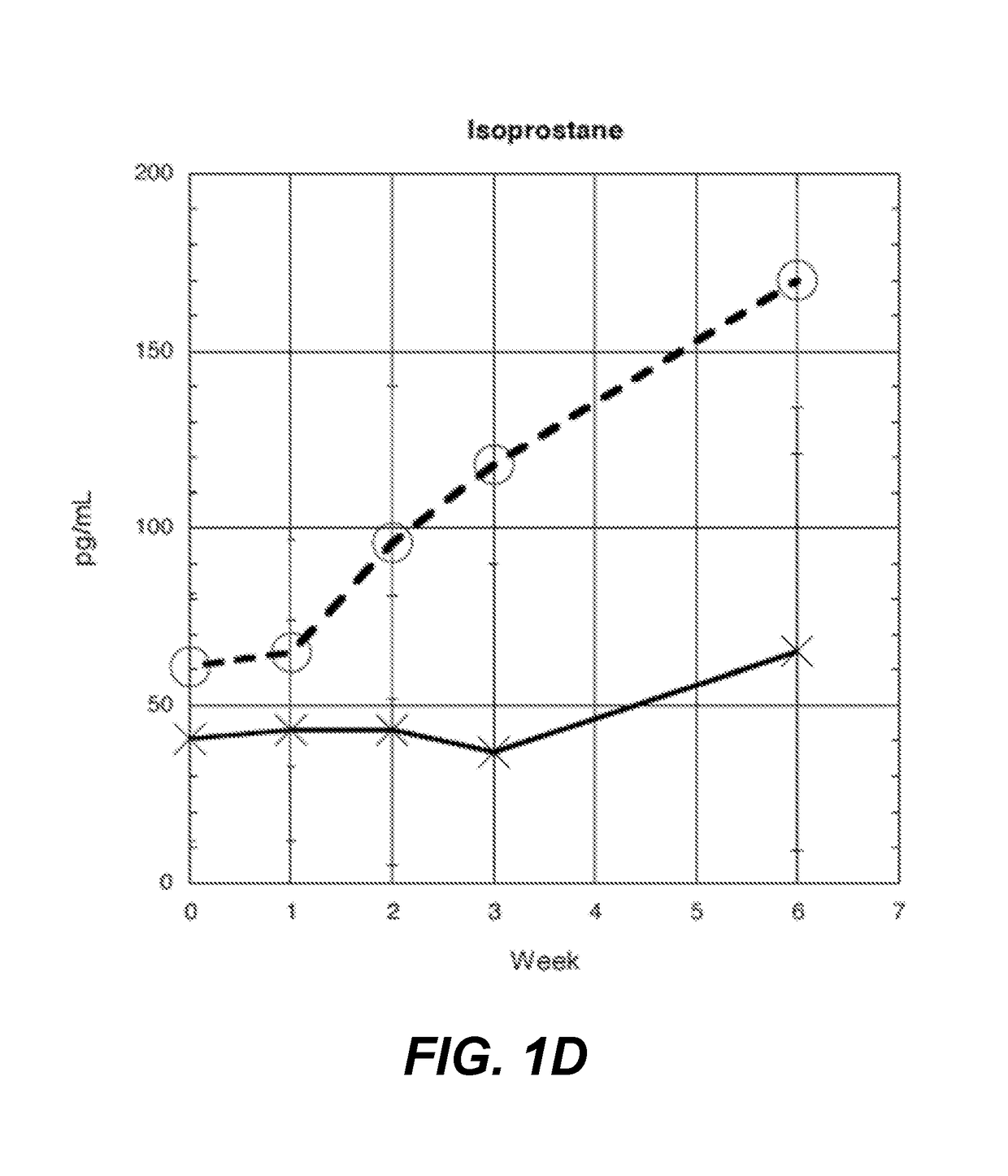Methods for the Storage of Whole Blood, and Compositions Thereof
a technology of whole blood and composition, applied in the field of whole blood storage, can solve the problems of coagulopathy, negative clinical outcomes, lack of studies on the deoxygenation of whole blood, etc., and achieve the effect of improving the survival of patients
- Summary
- Abstract
- Description
- Claims
- Application Information
AI Technical Summary
Benefits of technology
Problems solved by technology
Method used
Image
Examples
example 1
Cell-Free Hemoglobin, and Isoprostane Accumulations in Packed Red Blood Cells During Anaerobic Storage
[0132]Fifteen pRBC units are collected from normal healthy donors. Each unit is split and stored as follows: one in standard blood bank conditions (control), the other anaerobically (test) according to methods described in Yoshida et al., “Anaerobic Storage of Red Blood Cells in a Novel Additive Solution Improves In vivo Recovery,”Transfusion 49:458-64 (2008). At weeks 0, 1, 2, 3, and 6, samples are removed using a sterile connecting device from the PRBC units. Plasma samples are frozen for the following assays: single batch testing for 22 cytokines using the Procarta Immunoassay Magnetic Bead kit, 8-isoprostane FR, via mass spectrometric assay, and cell free hemoglobin via HemoCue plasma / photometer (HemoCue AB, Angelholm, Sweden).
[0133]As shown in FIG. 1A, eotaxin reaches a statistically significant difference at week 2 (86.6 pg / ml-control (c), 64.9-test (t), p-value—0.00213, with ...
example 2
n, Leukoreduction and Gas Depletion of Whole Blood
[0134]A unit of blood is collected from a donor patient into anticoagulant solution comprising either CPDA1 or CPDA according to standard protocols, including collection of heparin tubs. The collected blood containing anticoagulant is leukoreduced according to manufacturer's instructions less than or equal to four hours after the initial blood draw. Baseline ABL90 blood gas and metabolic parameters are determined from the donor heparin tube and the whole blood product according to standard procedures. See BSL Handbook Procedure BSL-P024: Procedure Manual and Radiometer ABL90 FLEX Gas Analyzer instructions.
[0135]An anaerobic control is prepared from each unit of leukoreduced blood by transferring 120 ml of LRWB / CPDA-1 or LRWB / CPD into a 150 mL transfer bag, labeled as appropriate and placed at room temperature (15°-30° C.).
[0136]The remainder of the LRWB LRWB / CPDA-1 or LRWB / CPD is processed for oxygen or oxygen and carbon dioxide depl...
example 3
f Anaerobic Test Products
[0138]Oxygen reduced and oxygen and carbon dioxide reduced blood in transfer bags are wrapped in mesh, secured with elastic and placed in anaerobic canisters with 4 sorbent sachets (Mitsubishi, SS-300). Canisters are sealed and the canister purged of air using an Alicat Gas Processing System. See BSL Handbook Procedure BSL-P040: Procedure for Placing Blood Products in Anaerobic Storage in Canisters. Anaerobic and aerobic blood is placed in a Blood Bank refrigerator at 1 to 6° C. Canister gauges are monitored daily to ensure that they read 5±1 psi. Canisters that fall below 2 psi are adjusted to standard procedures. See BSL Handbook Procedure BSL-P040: Procedure for Placing Blood Products in Anaerobic Storage in Canisters.
PUM
 Login to View More
Login to View More Abstract
Description
Claims
Application Information
 Login to View More
Login to View More - R&D
- Intellectual Property
- Life Sciences
- Materials
- Tech Scout
- Unparalleled Data Quality
- Higher Quality Content
- 60% Fewer Hallucinations
Browse by: Latest US Patents, China's latest patents, Technical Efficacy Thesaurus, Application Domain, Technology Topic, Popular Technical Reports.
© 2025 PatSnap. All rights reserved.Legal|Privacy policy|Modern Slavery Act Transparency Statement|Sitemap|About US| Contact US: help@patsnap.com



